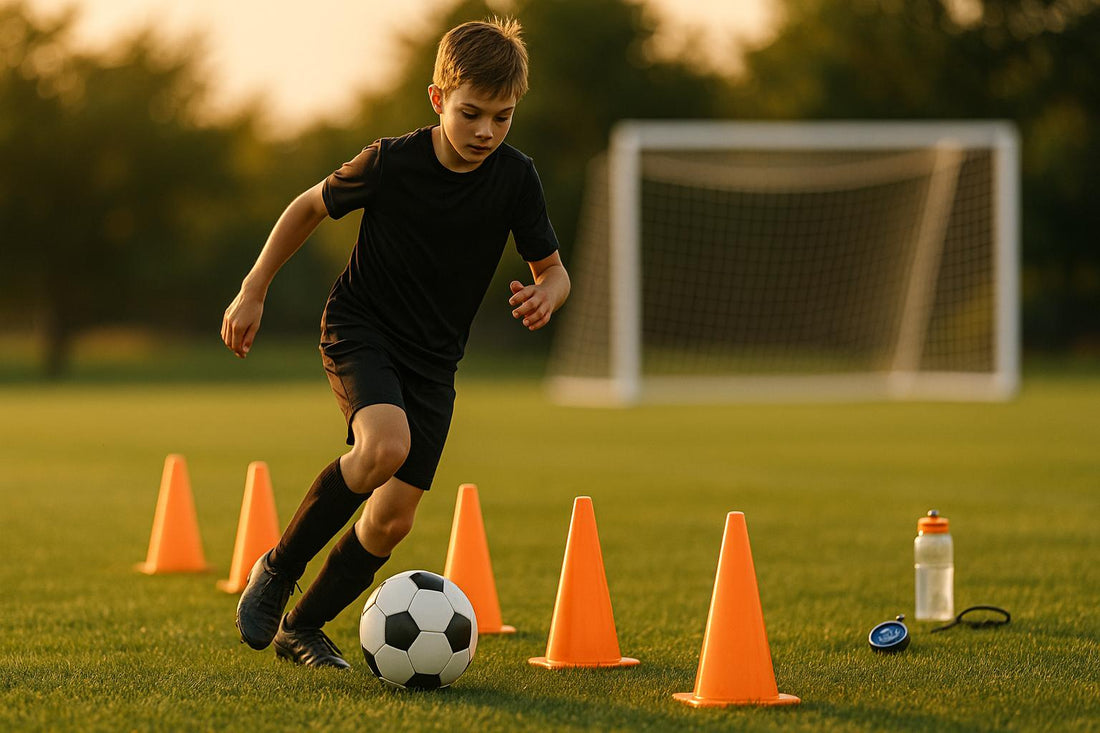
Soccer Skills Checklist: 8 Drills for Quick Improvement
Want to improve your soccer skills fast? Focused drills and the right equipment can make a huge difference. Here’s a quick breakdown of what you’ll need and the drills to practice:
Key Takeaways:
- Why Drills Work: Repetition builds muscle memory, improving ball control, passing, and shooting. Even 10 minutes of practice can lead to 1,000+ ball touches.
-
Essential Equipment:
- Kickit Soccer Tennis Set ($79.99): Portable net, ball, pump, and carry bag.
- Training cones, agility ladders, portable goals, and practice soccer balls.
-
Top 8 Drills:
- Dribble Attack: Practice ball control and speed with cone courses.
- Passing Accuracy: Hone precise passes using tools like the Kickit net.
- Agility Ladder Footwork: Improve speed and coordination.
- Soccer Tennis Volleys: Sharpen first touch and reaction time.
- Wall Pass Training: Perfect passing and ball control with a wall.
- Shooting Accuracy: Work on powerful, precise shots.
- Small-Sided Games: Boost teamwork and quick decision-making.
- Juggling Challenge: Enhance focus and coordination.
Why Kickit Equipment Stands Out:
- Lightweight, portable, and usable on any surface.
- Soccer Tennis Ball mimics a real ball but is lighter for safer practice.
- Over 20,000 reviews with a 4.9/5 rating.
Tracking Progress:
Measure your improvement with metrics like pass completion, shots on target, and dribble success. Regular practice and progress tracking will help you see results quickly.
Start practicing today, track your growth, and watch your game improve!
7 BEST soccer training drills I WISH you did daily...
Equipment Needed for Soccer Drills
Having the right gear makes all the difference when it comes to effective and safe soccer practice. You don’t need to break the bank - just focus on equipment that’s versatile and works for various drills and skill levels.
Kickit Soccer Tennis Products
Kickit Soccer Tennis products are a standout choice for soccer training. These portable systems set up in under a minute and can be used on almost any surface - whether it’s grass, concrete, or sand. The Kickit Soccer Tennis set is priced at $79.99 and includes everything you need: a 12-foot by 3-foot portable net, a specialized ball, a pump, and a carry bag.
For those looking for more competitive options, the Kickit Soccer Tennis Pro and the Kickit Inferno Soccer Tennis are available at $129.99 each.
The Kickit Soccer Tennis Ball ($24.99) is designed to mimic a regulation soccer ball but weighs half as much. This makes it safer for headers and barefoot play. It also features Air Gripping Technology, which slows the ball during play, giving players extra reaction time. You can even adjust the difficulty by tweaking the air pressure - lower pressure makes it easier to control, while higher pressure adds a challenge.
"KickIt [Soccer Tennis] helps you get better at soccer by giving you lots of chances to receive and play the ball using every surface. We call it rapid touch development." - Kickit.net
With over 20,000 reviews and a 4.9 out of 5-star rating, Kickit products are trusted by players of all skill levels.
Other Basic Equipment
While Kickit products are a great start, adding a few other essentials can significantly expand your training options:
- Training Cones: Use cones to mark boundaries and set up drill patterns. Options include the FORZA Soccer Training Marker Cones (50-pack for $22.99) or the Mini Training Marker Cones (50-pack for $14.99).
- Agility Ladder & Rings: Improve footwork with the Quickplay Agility Ladder ($19.99). Pair it with the FORZA Agility Rings (12-pack for $21.99) to enhance movement drills.
- Portable Goals & Agility Tools: For shooting and passing drills, try the FORZA World's Smallest Target Goal ($39.99). Add variety to your agility training with tools like the Quickplay Adjustable Speed Hurdles (set of 6 for $39.99) or the Quickplay Agility Poles (set of 10 for $44.99).
- Practice Essentials: Quality training soccer balls, such as the FORZA Training Soccer Ball ($9.99), ensure consistent practice. Flat disc markers (FORZA, pack of 10 for $18.99) and a technique control mat (FORZA, $19.99) can help refine ball control and positioning.
With these tools, you'll have everything you need to take your soccer training to the next level.
Soccer Skills Checklist: 8 Drills for Quick Improvement
Here are eight drills designed to sharpen key soccer skills. Each one hones a specific aspect of your game, from ball control to precision, while also boosting your overall awareness on the field. Use this checklist to guide your training and see noticeable progress.
1. Dribble Attack
This drill focuses on improving ball control, speed, and quick decision-making under pressure. Set up a course with cones and practice dribbling using both feet. Once you’re comfortable, add a competitive edge by doing dribbling relays with teammates.
Pro tip: Start at a slower pace to perfect your technique, keeping the ball close with small, controlled touches. Gradually increase your speed as you gain confidence.
2. Passing Accuracy
Build precision and timing with targeted passing drills. Work on triangle passing to maintain possession and move into open spaces. Incorporate two-touch passes, lofted passes, and even use tools like the Kickit Soccer Tennis set to create visual targets for honing your aim.
3. Agility Ladder Footwork
An agility ladder is a great way to develop speed, balance, and coordination. Try different patterns, such as lateral shuffles or in-and-out steps, for a 10–15 minute warm-up. It’s an excellent way to activate your muscles and get ready for practice.
4. Soccer Tennis Volleys
Set up a Kickit Soccer Tennis net and practice volleys to refine your first touch and reaction time. Start with simple one-touch exchanges, focusing on control and timing. Gradually mix it up by using different body parts to return the ball.
"This game also improved my footwork! ⚽️" - @RyanA
Advanced tip: Once you’re comfortable, aim for longer rallies with fewer touches to challenge your precision and consistency.
5. Wall Pass Training
A sturdy wall can be your best training partner. Practice short, sharp passes at various angles. Concentrate on controlling the rebound and quickly returning the ball with accuracy. This drill is perfect for improving your touch and reaction speed.
6. Shooting Accuracy
Work on power and precision by practicing shots with your instep and inside foot. Add one-touch finishing drills - have a partner roll the ball to you from different angles to simulate real match scenarios. Placing small targets in the goal can help refine your aim even further.
7. Small-Sided Games
Playing small-sided matches is an excellent way to improve teamwork, decision-making, and your overall soccer IQ. These games encourage frequent touches and quick transitions in tight spaces. For an extra challenge, try adding rules like limiting touches to enhance technique and decision-making under pressure.
8. Juggling Challenge
Juggling is a fun way to improve coordination and focus. Start with basic foot juggling, keeping your touches controlled. As you advance, alternate feet and incorporate other body parts like your thighs or head. The lightweight design of some soccer balls makes this drill beginner-friendly while still challenging for advanced players.
Focus tip: Stay relaxed, keep your eyes on the ball, and use small, consistent touches to maintain control during your juggling practice.
sbb-itb-8dc5da3
How to Use Kickit Soccer Tennis Equipment
Kickit equipment is designed to take your practice sessions to the next level by focusing on skill improvement. Its lightweight construction and quick 60-second setup mean you can spend more time honing your skills and less time setting up. This gear provides consistent, high-quality conditions, making it ideal for executing the drills mentioned earlier.
One of the best parts? You can use it on almost any surface. Whether you're on grass, a concrete driveway, or even a sandy beach, the equipment works seamlessly. Just adjust the ball's inflation - inflate it more for softer surfaces like sand or grass, and less for harder surfaces like driveways or parking lots.
Why Kickit Equipment Stands Out
The Kickit soccer tennis ball is a game-changer for skill development. It’s the same size as a standard soccer ball but weighs only half as much, making it safer and easier to handle during training. Thanks to its air-gripping technology, the ball moves slower, giving players extra time to react and refine their technique. Plus, the adjustable inflation feature lets you tweak the difficulty level - more air makes the ball bounce livelier for advanced drills, while less air keeps it manageable for beginners or precision-focused exercises.
Portability is another big win. Each Kickit set comes with everything you need: steel poles with internal elastic cords, nets, boundaries, balls, and pumps, all neatly packed into a carry bag. This setup makes it easy to bring professional-quality training anywhere, whether it's your backyard or a team camp. With an impressive 4.9 out of 5 rating from over 20,000 players, it’s clear that Kickit equipment delivers results.
Drill Ideas with Kickit
Kickit equipment can be seamlessly integrated into a variety of drills to sharpen your skills. Here are a few ideas:
- Passing Accuracy: Use the net as a target zone. Practice lofted passes that clear the net and land in specific areas to improve your pass precision and power.
- Volley Training: Simulate real-game scenarios to work on clean, controlled volleys. As players progress, add movement patterns to mimic the pace and unpredictability of actual matches.
- Juggling Challenge: Combine soccer tennis rules with juggling drills. Players can keep the ball airborne while advancing toward the net, finishing with a controlled volley to a partner. This drill enhances timing, coordination, and spatial awareness.
- Small-Sided Games: Set up boundaries and use the net as a central obstacle. Add rules like requiring one touch over the net before scoring or limiting the number of touches before the ball crosses over. This encourages strategic play and teamwork.
- Wall Pass Training: Use the net to add complexity to passing drills. Have one player use a wall while another operates near the net, creating intricate passing sequences that test timing and decision-making.
- Shooting Accuracy: Position the net at varying distances and heights to create unique target zones. This encourages players to adapt their shooting technique for different situations, from low drives to chipped finishes, while offering instant feedback on their shot placement and power.
With Kickit equipment, you can transform ordinary practice sessions into dynamic, skill-building experiences.
Tracking Progress and Measuring Improvement
Tracking progress transforms random practice into focused skill development. Without clear measurements, it’s easy to overlook areas that need attention.
Focus on metrics that directly affect game performance. For technical skills, look at things like ball control, passing accuracy, and shooting power - these offer specific data points you can monitor over time. Physical attributes such as speed, agility, and endurance also provide measurable benchmarks for improvement.
Progress Tracking Checklist
Use this checklist to track your performance during drills and ensure steady growth:
| Metric | What to Track | How to Measure |
|---|---|---|
| Pass Completion Rate | Number of completed passes ÷ total attempts | Record successful passes out of 20 tries |
| Shots on Target | Shots hitting the target area | Count accurate shots out of 15 attempts |
| Dribble Success Rate | Successful dribbles ÷ total attempts | Track cone weaving or 1v1 scenarios |
| Juggling Consistency | Maximum consecutive touches | Record your best streak each session |
| Sprint Times | 40-yard dash or agility ladder completion | Use a stopwatch for precise timing |
| Distance Covered | Total distance during small-sided games | Track with fitness apps or GPS watches |
Make note of variables like the date, weather, training surface, and energy level to better understand performance fluctuations.
Set weekly targets to stay focused on specific improvements. For instance, if your pass completion rate is 70%, aim to hit 75% within two weeks. Track your repetitions and practice time to distinguish between simply putting in more effort and genuinely improving your technique.
Self-Assessment and Feedback
Building on tracked metrics, self-assessment helps you better understand your progress. After every session, take a few moments to reflect on what went well and what could be improved.
Ask yourself specific questions: Was my first touch consistent? Were my passes accurate and at the right pace? Could I maintain control when changing direction? These reflections help identify technical issues early, before they turn into habits.
Video analysis is another powerful tool for getting objective feedback. Record yourself performing drills from multiple angles and review the footage. Look for details like body positioning, foot placement, or follow-through on passes and shots that might need adjustment.
"You don't always want to hear it. And as a player, you want to be right! You know [how it is] 'Who are these guys to tell you, a professional player, how to handle yourself!!' But I've always been with that mentality that I'm here to learn. That's who I want to be, and it's what makes the top players to the top." - Christian Pulisic
Peer feedback is equally valuable. Training with teammates or friends allows them to observe your technique and decision-making. They might spot habits you’re unaware of - like favoring your dominant foot or signaling your next move too obviously.
Plan monthly assessments where you test all your key drills under consistent conditions. Using the same training surface, similar weather when possible, and uniform rest periods ensures your data is reliable for tracking long-term trends.
Document breakthrough moments and note any changes that led to improvement. These observations can help you replicate the conditions that worked best.
Position-specific tracking becomes essential as you refine your role on the field. Forwards should focus on metrics like pass completion rates, shots on target, and dribble success. Midfielders might prioritize pass accuracy and total distance covered, while defenders could track tackle success rates and interceptions. Tailoring your tracking to your position ensures you’re improving the skills that matter most.
Conclusion: Get Results with Regular Practice
Sticking to a routine with these eight focused drills lays the groundwork for noticeable soccer improvement. Studies indicate that players who train with structured skill-building sessions at least three times a week see faster gains in ball control and passing accuracy. In fact, technical skills can improve by as much as 30% over a single season when paired with consistent, intentional practice. This highlights the importance of blending varied drills with the right tools to maximize progress.
The secret to effective training? Make it both productive and enjoyable. Repetition is key to building muscle memory, but mixing up your drills keeps things fresh and motivating. That’s where Kickit's soccer tennis equipment comes in. It turns routine practice into exciting, competitive sessions, sharpening skills like volleys, first touch, and ball control in a setting that mimics real-game scenarios.
Specialized equipment like this adds a new dimension to your training. Instead of just practicing volleys against a wall, you’re engaged in fast-paced soccer tennis matches that challenge your reaction time and coordination. Plus, its adaptability means you can train effectively in a variety of settings, keeping your sessions versatile and engaging.
Consistency is the cornerstone of skill development. Even short drills - just 10 to 15 minutes - can lead to big improvements in technical ability, confidence, and creativity on the field. And when training feels fun, it’s easier to stay committed over the long haul. Enjoyable sessions make it more likely you’ll stick with your routine, even when motivation dips. Over time, focused practice leads to noticeable changes in technique.
Tracking your progress is another powerful motivator. Setting weekly goals and conducting monthly assessments help you measure growth and stay on track. By combining structured drills, engaging tools, and regular evaluations, you create a well-rounded approach to soccer training that supports players at every stage of their journey.
FAQs
How can I use Kickit Soccer Tennis equipment to enhance my soccer training?
Incorporating Kickit Soccer Tennis equipment into your training can help you refine essential soccer skills like ball control, passing, and agility. To get started, set up the portable net and use the Kickit Soccer Tennis Ball for drills that target footwork and coordination. These exercises not only improve your touch but also make your training sessions more enjoyable.
For added variety, try using the Kickit "Birdie" Trainer to work on precision and ball-handling. These tools are simple to use and can easily fit into your regular practice routine. They’re designed to enhance your overall skill set while keeping your sessions both productive and fun.
How can I track my progress while practicing the soccer drills from the article?
Tracking your progress is essential if you want to sharpen your soccer skills. One great way to do this is by keeping a training journal or using a mobile app. Use it to log your practice sessions, track your goals, and record your results. This simple habit keeps you organized and lets you see how far you've come over time.
Another effective approach is setting measurable goals for specific drills, like boosting your ball control or improving passing accuracy. Test yourself regularly to gauge your progress. For instance, you could time how fast you complete a drill or count how many successful passes you can make in a row. By reviewing your performance consistently, you'll clearly see what you're doing well and identify the areas that need extra attention.
Why should I use soccer training equipment like agility ladders and cones during practice?
Using soccer training tools like agility ladders and cones can make a big difference in developing essential skills such as footwork, coordination, and reaction time. These tools are perfect for practicing quick direction changes, improving body control, and boosting overall agility - key elements for excelling on the field.
Adding this equipment to your training not only sharpens your game but also helps lower the risk of injuries. By encouraging proper movement patterns and building up stabilizing muscles, they support safer, more efficient performance. Whether you're just starting out or have years of experience, these tools offer focused, purposeful practice to take your skills to the next level.

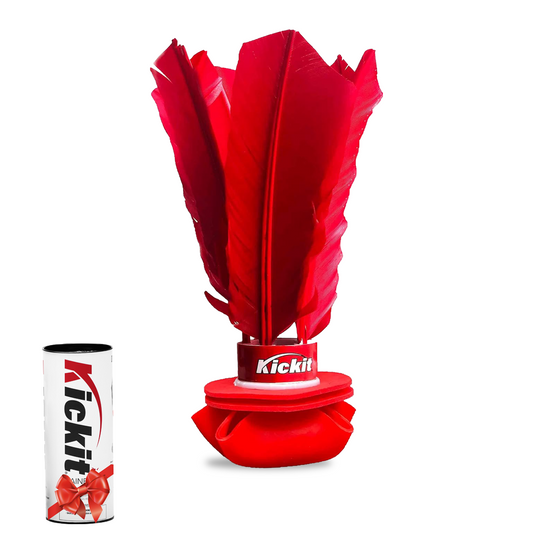
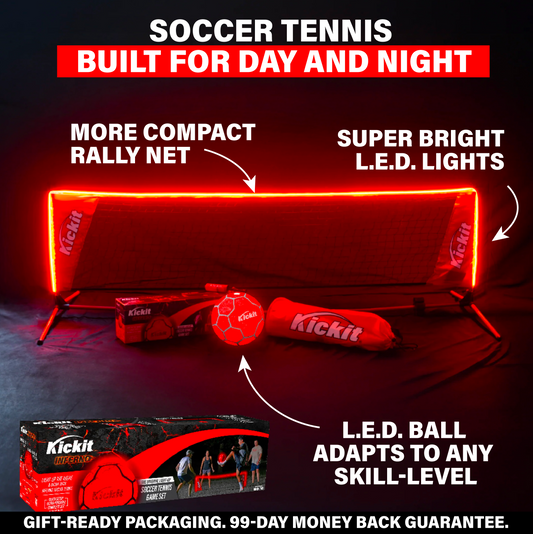
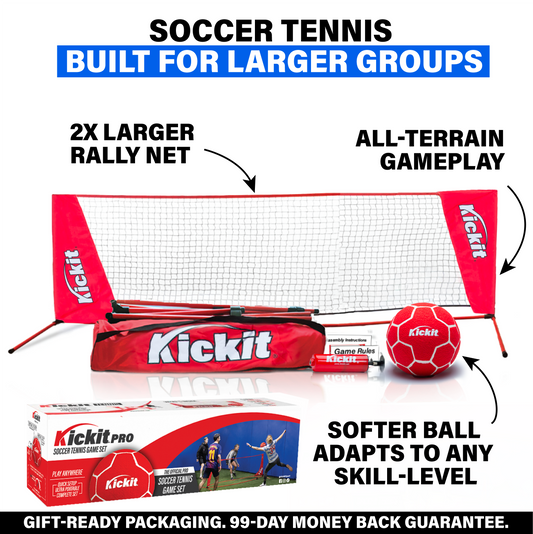
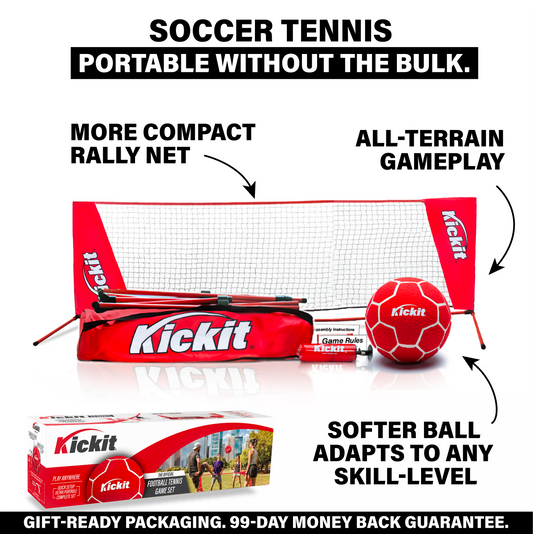
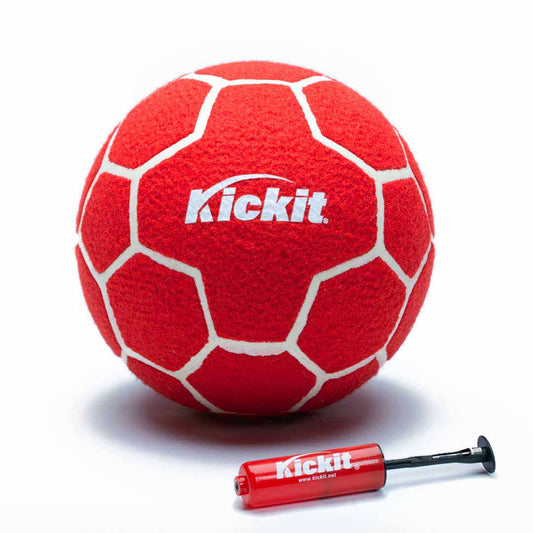
![[NEW] Inferno Kickit](http://kickit.net/cdn/shop/files/LED-Trainer_callouts.png?v=1761055297&width=533)
